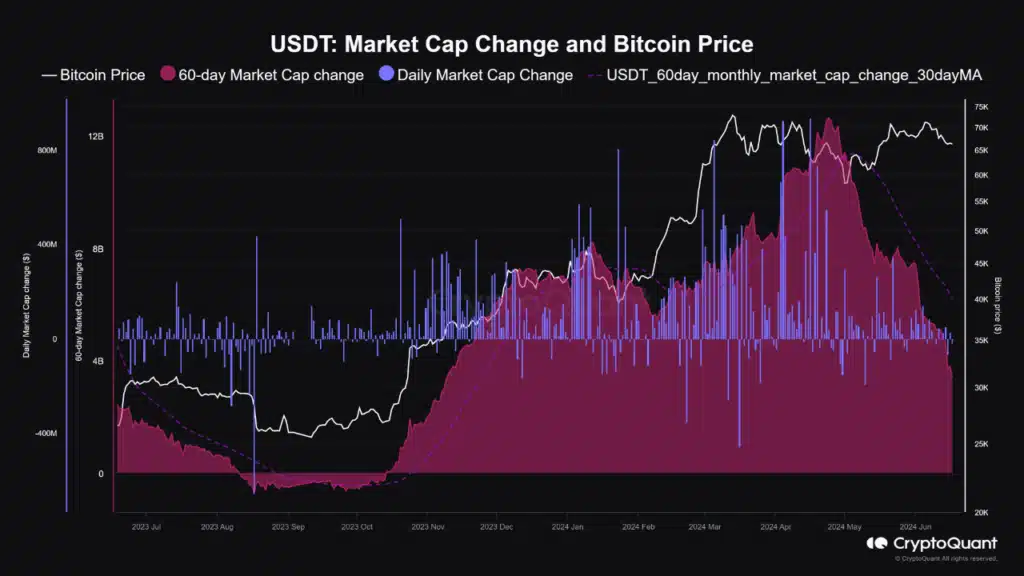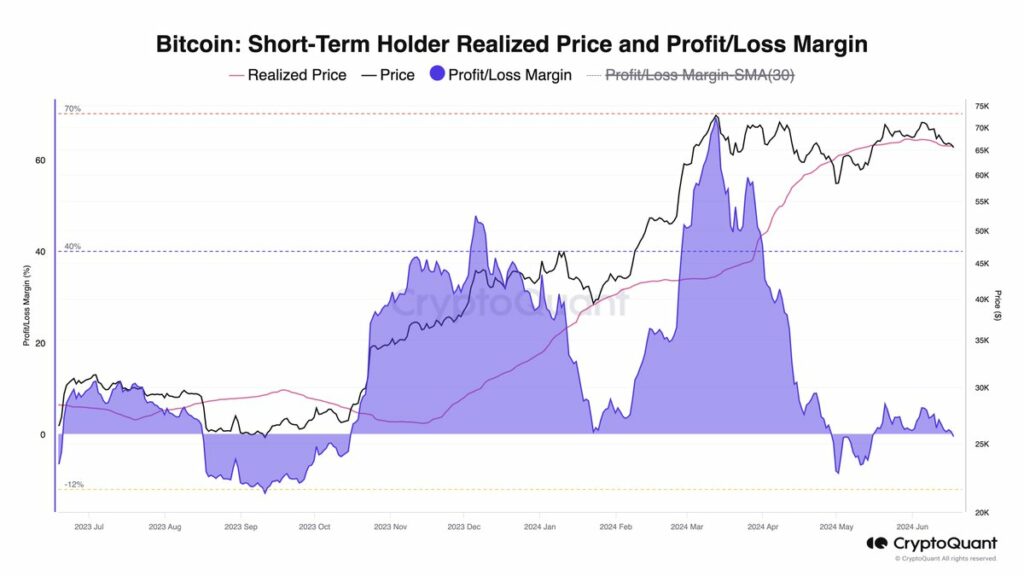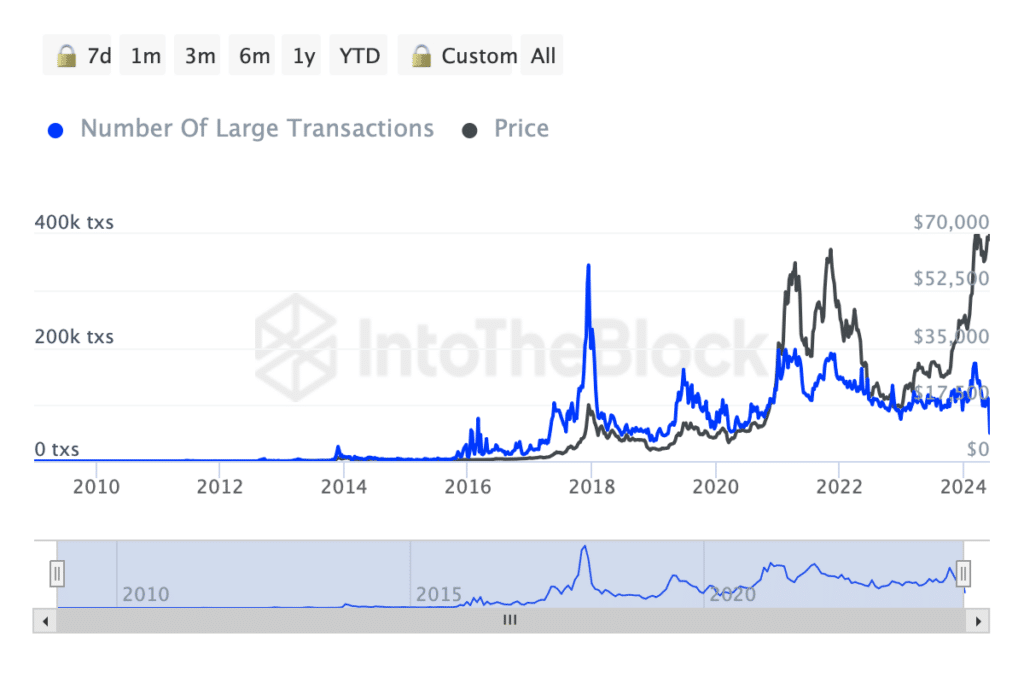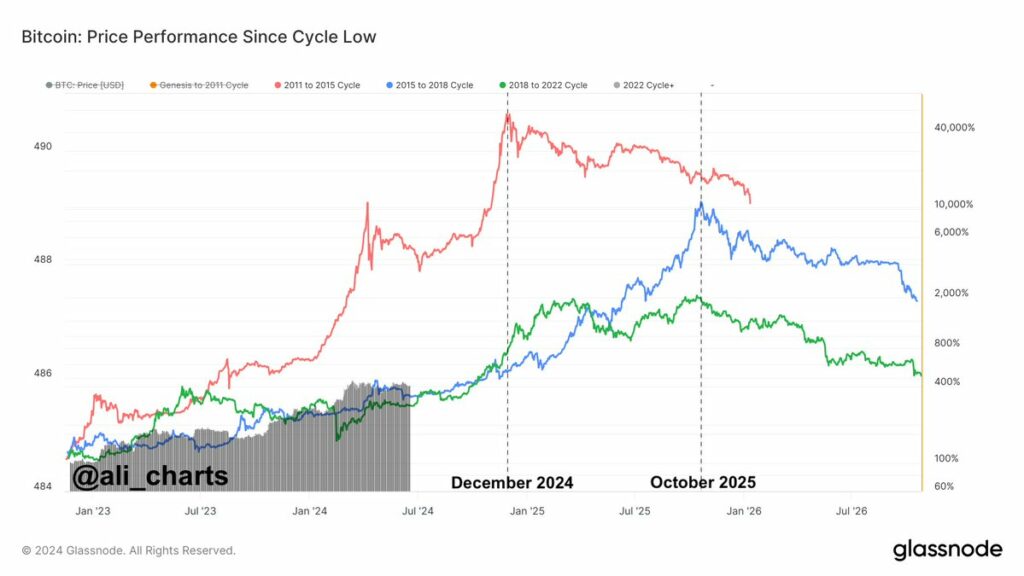- The capitulation of miners and reduced issuance of stablecoins reduces the liquidity of the crypto market.
- The significant outflows from ETFs are increasing selling pressure on Bitcoin.
The crypto market has witnessed a significant downturn, with the global market capitalization falling from over $2.8 trillion to just under $2.5 trillion in a matter of weeks.
This sharp decline has spread throughout the industry and has affected major cryptocurrencies such as Bitcoin [BTC]which has seen a decline of 7.9% in the past two weeks alone.
Market analysts have quickly identified several factors contributing to current market conditions.
A closer look at Bitcoin revealed that not only has it fallen nearly 8% over the past two weeks, but it has also continued to struggle over the past 24 hours, losing another 0.1% to trade around $65,524.
What’s behind this recent recession?
Reasons behind the crypto plunge
One of the most important factors is the CryptoQuant analyst cited Because the recent market decline is the capitulation of miners.
The CryptoQuant analyst points out that a significant drop in miner revenue – by as much as 55% – has forced miners to offload Bitcoin to cover operational costs.


Source: CryptoQuant
This increase in Bitcoin moving from miners’ wallets to the exchange often precedes a price drop as the market absorbs the additional selling pressure.
Furthermore, the lack of new issuance of major stablecoins such as USDT and USDC has contributed to reduced liquidity in the market.
Normally, new issues mean new capital entering the market, increasing trading volumes and supporting price levels.


Source: CryptoQuant
However, as stablecoin issuances stagnate, there is less new money to counter the selling pressure, leading to greater volatility and price declines.


Source: CryptoQuant
Another major pressure point comes from the outflows seen among the major cryptocurrency exchange-traded funds (ETFs).
Notable withdrawals, such as the more than 1,384 BTC withdrawn from Fidelity on June 17, illustrate the selling pressure weighing heavily on Bitcoin prices.
These pullbacks reflect a broader sense of caution among crypto investors, especially in response to the uncertain macroeconomic landscape.
Selling behavior is not isolated to institutional investors; it also extends to short-term holders.
The Spent Output Profit Ratio (SOPR) for this group has not yet reached the peaks typical of market peaks, indicating that we are not yet at a cycle top.
Instead, we see a market still dominated by long-term holders, providing a strong level of support that could dampen any further decline in the cryptocurrency.
Looking forward
Despite the current recession, there are indications that the market is approaching a bottom.
Another CryptoQuant analyst, Julio Monero, marked on the


Source: CryptoQuant
Factors such as subdued activity from traders and large investors, coupled with the limited liquidity of stablecoins and reduced interest from US investors, are currently dampening the crypto market’s momentum.
Further research using the data from IntoTheBlock revealed a notable increase in the number of Bitcoin transactions above $100,000, indicating increased activity from large-scale investors, which could foreshadow a shift in market momentum.


Source: IntoTheBlock
Prominent crypto analyst Ali, who analyzes Bitcoin’s historical price trends, suggested that if the current market cycle follows previous patterns, we may not see a peak until late 2024 or 2025.


Source: Ali Charts on X
Read Bitcoin’s [BTC] Price forecast 2024-2025
This analysis was shared alongside a chart illustrating Bitcoin’s performance from its most recent cycle low.
Meanwhile, according to AMBCrypto’s recent report, despite all these downturns, we are still in a crypto bull market.

